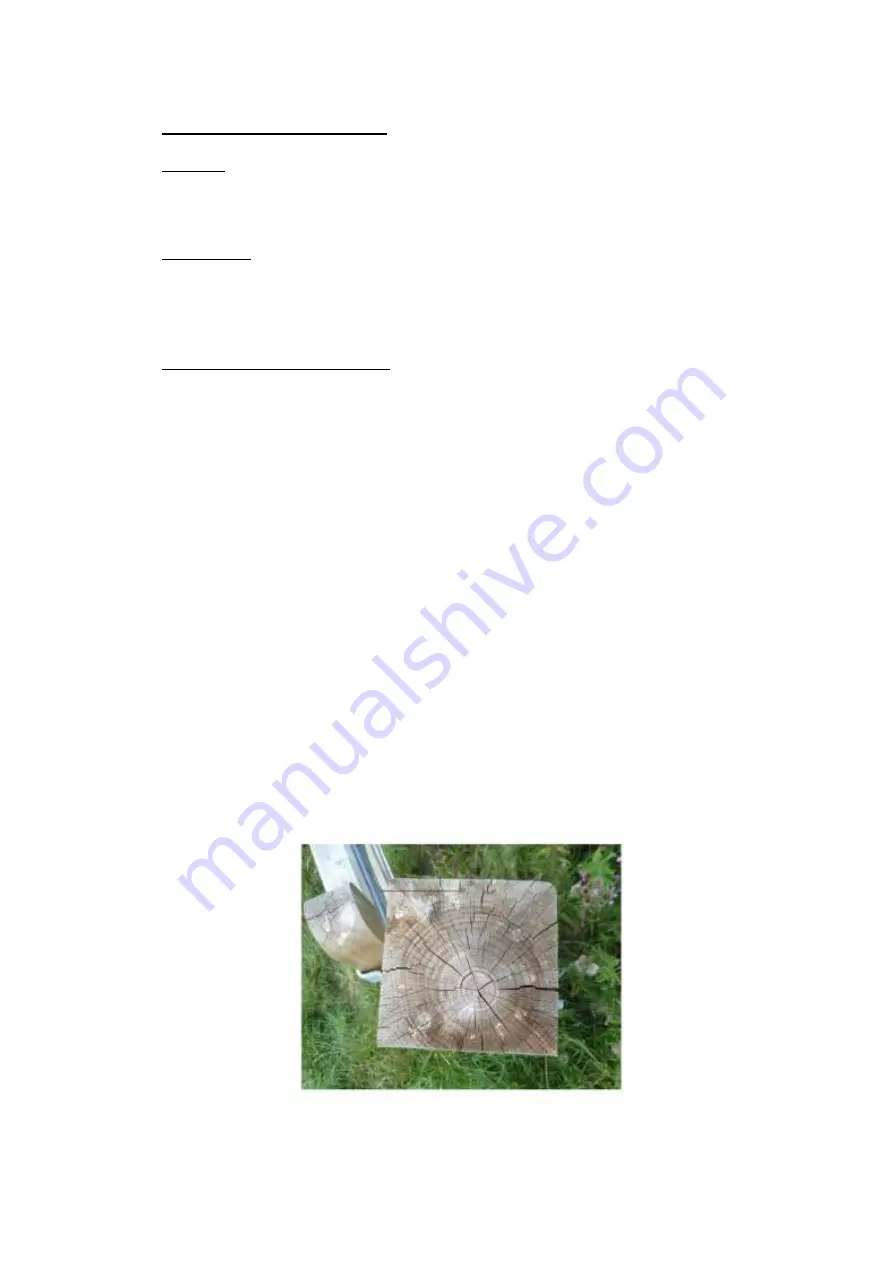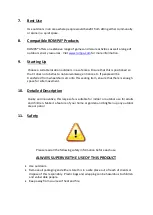
14.
Care and Maintenance
Cleaning
To clean this product use a damp cloth and mild soapy water.
Timber Care
Please inspect the equipment regularly. Should any splinters or roughness be noticed
on the surface that may cause harm, please sand these carefully with sandpaper.
Cracking and splitting in timber
Timber is a natural product. Cracks, splits and fissures may occur as timber dries; this
is a natural process and does not affect the strength and durability of the timber. The
timber will change colour over time and may also contain knots and knot holes. This
is to be expected and does not represent a fault. These can be filled with a flexible
compound such as clear Mastic. With variable changes in climate the fissures change
in size and can go from fully closed to open as in the pictures below.
Sometimes cracks can open up and be alarmingly large, but remember it is entirely
normal and once the inner core has dried, the crack will close up. Likewise, as the
moisture in the air increases, so will the free water absorbed by capillary action in the
wood and once again the cracks will close up.
None of these splits or cracks in the timber will affect its structural integrity or inherent
strength. If you experience cracks and splits in your timber, especially when it is
obviously milled from a whole trunk, it is not a “defective” product, nor is the strength
impaired, it simply is timber exhibiting its normal state and characteristics.
These following pictures shows two images of the same post. The first image is when
installed, the second is after high humidity and damp conditions.
Both the heart and the pith are reaching an equilibrium.























